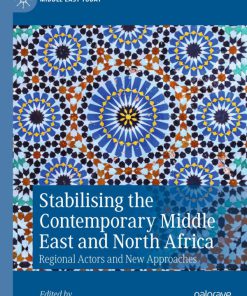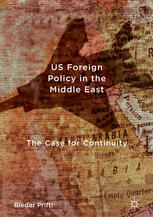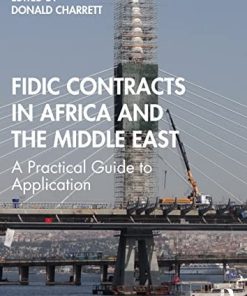The Quest for Subsidy Reforms in the Middle East and North Africa Region 1st Edition by Paolo Verme 9783319529257 3319529250
$50.00 Original price was: $50.00.$25.00Current price is: $25.00.
The Quest for Subsidy Reforms in the Middle East and North Africa Region 1st Edition by Paolo Verme – Ebook PDF Instant Download/Delivery:9783319529257,3319529250
Full download The Quest for Subsidy Reforms in the Middle East and North Africa Region 1st Edition after payment

Product details:
ISBN 10:3319529250
ISBN 13:9783319529257
Author:Paolo Verme
This book is an analysis of energy and food subsidies in the MENA region between 2010 and 2014. Using the World Bank’s proprietary SUBSIM model, the book studies the distribution of subsidies and the simulation of subsidy reforms across eight countries within in a partial equilibrium framework. The distributional analysis of subsidies provides information on who benefits from existing subsidies, while the simulations of subsidy reforms provide information on the outcomes of the reforms in terms of government budget, household welfare, poverty, inequality, and the trade-offs between these outcomes. This focus provides governments with the essential information they need to make decisions on subsidy reforms and consumers with a clear sense of which programs and reforms are successful. The book highlights the historical roots of subsidies, the real trigger of subsidy reforms, and the complexity of subsidy reforms. It discusses the pros and cons of radical and gradualist approaches to reforms, the use of compensation mechanisms and their implications, the advantages and disadvantages of public information campaigns, the political economy of targeting different economic populations, the political timing of reforms, and whether, overall, the reforms observed in the MENA region have been successful. The first book on subsidies in the MENA region that is based on primary micro data, this book is useful for researchers and graduate students studying political economy and working with microsimulation modelling instruments as well as government officials engaged in subsidies reforms, research institutes and private consulting groups advising governments on subsidy reforms.
The Quest for Subsidy Reforms in the Middle East and North Africa Region 1st Table of contents:
1 Subsidy Reforms in the Middle East and North Africa Region: A Review
Introduction
A Brief History of Subsidies
What Triggered Reforms?
Who Reformed, When, How, and Why?
Islamic Republic of Iran: December 18, 2010
Yemen: 2010–2014
Jordan: November 13, 2012
Arab Republic of Egypt: July 5, 2014
Morocco: September 16, 2013–October 1, 2014
Tunisia: 2012–14
Policy Options
Radical Versus Gradualist Approach
Compensation Versus Noncompensation
Public Information Versus No Information
Piecemeal Versus Wholesale Reforms
Poor Versus Middle Class
Energy Versus Food Subsidies Reforms
Direct Versus Indirect Effects
Political Timing of Reforms
Unfinished Business
A Success Story?
What Next?
Acknowledgements
Appendix
References
2 A Comparative Analysis of Subsidies and Subsidy Reforms in the Middle East and North Africa Region
Introduction
Data and Analytical Approach
Microdata
Baseline Prices and Subsidies
A Distributional Analysis of Subsidies
The Absolute Importance and Distribution of Subsidies
The Relative Importance and Distribution of Subsidies
A Policy Dilemma
Simulations of Subsidies Reforms
Welfare
Inequality
Government Budget
Conclusion
Acknowledgements
Annex 2.1
Annex 2.2
References
Country Case Studies
3 An Evaluation of the 2014 Subsidy Reforms in Morocco and a Simulation of Further Reforms
Introduction
The Evolution of Subsidies
Petroleum Products
Sugar and Cooking Oil
Wheat and Flour
Baseline Data
A Distributional Analysis of Subsidies (October 2014)
Simulation of Subsidy Reforms
Evaluation of the 2014 Subsidy Reforms
Direct Effects
Indirect Effects
Complete Elimination of Subsidies
Direct Effects
Indirect Effects
The Political Economy of Reforms
Conclusion
Acknowledgements
Annex 3.1: Major historical landmarks of Morocco’s subsidy system
References
4 The Socioeconomic Impacts of Energy Reform in Tunisia: A Simulation Approach
Introduction
Evolution of Energy Subsidies in Tunisia
Current Structure of Energy Subsidies in Tunisia
Structure of Residential Energy Prices
Estimating Energy Subsidies
Socioeconomic Profile of Energy Subsidies
Residential Consumption and Expenditures on Energy
Socioeconomic Distribution of Energy Subsidy Benefits
Simulating the Distributional Impacts of a Subsidy-Reducing Reform
A Methodological Note on Simulations
Spending and Consumption Impacts
Compensating Interventions to Energy Subsidy Reforms
Conclusion
Appendix 1: Electricity Tariff Structure for Low-Tension Residential Consumers (January 1, 2014)
Appendix 2: Distribution of Monthly Electricity Consumption by Quintile
Appendix 3: Composition of Consumption of Energy Sources by Sector (2012)
References
5 The Quest for Subsidy Reforms in Libya
Introduction
Evolution of Subsidies
Baseline Data, Assumptions, and Limitations
Food Subsidies
The Distribution of Food Subsidies
Simulation of Food Subsidy Reforms
Energy Subsidies
The Distribution of Energy Subsidies
Simulations of Energy Subsidy Reforms
The Political Economy of Reforms
Summary and Recommendations
Acknowledgements
References
6 Energy Subsidies and the Path Toward Sustainable Reform in the Arab Republic of Egypt
Introduction
Scale of Subsidies
How Do the Key Stakeholders Perceive Subsidy Reforms?
Household Use of and Spending on Energy
Distribution of Direct Subsidies Among Households
Conclusions
References
7 Energy Subsidies Reform in Jordan: Welfare Implications of Different Scenarios
Introduction
Evolution of Subsidies
Subsidies on Petroleum Products
Subsidies on Electricity
Distribution of Subsidies
Petroleum Products
Electricity
Direct Impact of Simulation of Subsidies Reform
Petroleum Products
Scenario 1: Subsidy Cuts Without Cash Transfers
Scenario 2: Subsidy Cuts with Cash Transfers
Impact of the Petroleum Products Reform on Government Revenue
Electricity
Three Scenarios for Electricity Tariffs Reforms
Impact of Electricity Reform on Government Revenue
Indirect Impact of Simulation of Subsidies Reform
Petroleum Products
Electricity
The Political Economy of Reforms
Conclusions
Annex 7A
Annex 7B
References
8 Energy Subsidies Reform in the Republic of Yemen: Estimating Gains and Losses
Introduction
Evolution of Subsidies
Distribution of Subsidies
Baseline Data
Distribution of Subsidies
Simulation of Subsidies Reforms
Fuel Products
Electricity
The Political Economy of Reforms
Conclusions
Annex
References
9 Djibouti: Subsidies, Tax Exemptions and Welfare
Introduction
Evolution of Subsidies
Determination of the Retail Price
Distribution of Subsidies
Energy Products
Food Products
Simulation of Subsidies Reforms
Impact of Removing the Discretionary Tax on Fuel Products
Diesel Prices and Transport Costs
Impact of Fuel Subsidy Reform on Household Welfare, Government Budget, Poverty, and Inequality
Impact of Introducing Consumer Tax on Basic Food Items
The Political Economy of Reforms
Fuel Subsidies
Social Safety Nets
Role of Social Safety Nets
Impact of Reforming Tax Exemptions and Safety Nets on Poverty
Likely Impact of Compensation Policies Through Social Safety Nets Programs
Conclusion
Acknowledgements
References
10 Consumer Subsidies in the Islamic Republic of Iran: Simulations of Further Reforms
Introduction
Evolution of Subsidies
Data
Distribution of Subsidies
Simulations of Subsidy Reform
Scenario 1: Direct Effects
Scenario 1: Indirect Effects
Scenario 2: Direct Effects
Scenario 2: Indirect Effects
The Political Economy of Reforms
Conclusions
People also search for The Quest for Subsidy Reforms in the Middle East and North Africa Region 1st:
a quest for change in the middle east summary
a quest for change in the middle east answers
a quest for change in the middle east
a subsidy
if the government subsidizes the production of corn
Tags:
Paolo Verme,Reforms,Middle,Africa,Quest
You may also like…
Politics & Philosophy - Social Sciences
Education Studies & Teaching - Teaching - Reading & Language
Education Studies & Teaching
Education Studies & Teaching
Evaluation in Foreign Language Education in the Middle East and North Africa 1st Edition Sahbi Hidri
Politics & Philosophy - International Relations
Politics & Philosophy
Women, Work, and Patriarchy in the Middle East and North Africa 1st Edition Fariba Solati (Auth.)
Commercial & Financial Law
Uncategorized
Positive Psychology in the Middle East North Africa Research Policy and Practise Louise Lambert
Politics & Philosophy
Minorities and State-Building in the Middle East: The Case of Jordan 1st Edition Paolo Maggiolini












